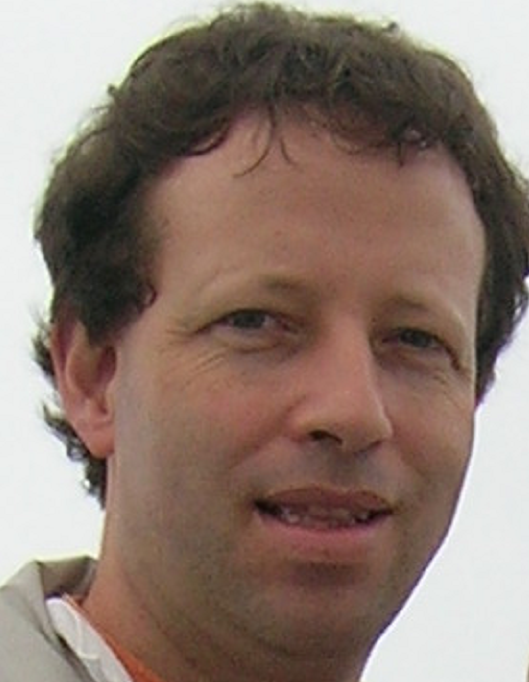Team:St Andrews/advisors
From 2010.igem.org
(Difference between revisions)
(→John Mitchell) |
(→John Mitchell) |
||
| Line 21: | Line 21: | ||
<br> | <br> | ||
John is interested in anything computational and related to molecules. Having been a theoretical chemistry graduate student, his first postdoc was in Biochemistry at UCL. He has been a lecturer and Birkbeck and at Cambridge, before coming to St Andrews in 2009. Since then, he has done lots of chemoinformatics, quite a lot of bioinformatics and only a little real theoretical chemistry. His scientific interests include computing the binding affinities between proteins and ligands, side-effects and toxicities of pharmaceuticals, and how much of a compound will dissolve in water. His group have worked extensively on the prediction of molecular properties such as melting point and solubility from chemical structure. They also use computational methods to study enzyme reaction mechanisms. They have (fairly) recently developed the MACiE database of enzyme reaction mechanisms in collaboration with Prof. Janet Thornton at the EMBL-EBI. | John is interested in anything computational and related to molecules. Having been a theoretical chemistry graduate student, his first postdoc was in Biochemistry at UCL. He has been a lecturer and Birkbeck and at Cambridge, before coming to St Andrews in 2009. Since then, he has done lots of chemoinformatics, quite a lot of bioinformatics and only a little real theoretical chemistry. His scientific interests include computing the binding affinities between proteins and ligands, side-effects and toxicities of pharmaceuticals, and how much of a compound will dissolve in water. His group have worked extensively on the prediction of molecular properties such as melting point and solubility from chemical structure. They also use computational methods to study enzyme reaction mechanisms. They have (fairly) recently developed the MACiE database of enzyme reaction mechanisms in collaboration with Prof. Janet Thornton at the EMBL-EBI. | ||
| + | <br><br> | ||
| + | <i></i> | ||
| + | </div> | ||
| + | </html> | ||
| + | == Wim Verleyen == | ||
| + | <html> | ||
| + | <div class="exphoto"> | ||
| + | <img class="ph" border="0" src="http://sphotos.ak.fbcdn.net/hphotos-ak-snc3/hs220.snc3/22772_272858909741_817944741_3098386_7019198_n.jpg"/ width=150> | ||
| + | </div> | ||
| + | <div class="text"> | ||
| + | <br> | ||
| + | <br> | ||
| + | <br> | ||
| + | Wim Verleyen studied Electronics in Secondary School. He then obtained 2 Master degrees: one in Electrical | ||
| + | Engineering and one in Computer Science. His interests in computer security lead him to be active as a | ||
| + | Software Maintenance Engineer on Electronic Payment terminals and then as a Software Developer for | ||
| + | Authentication and Internet Security Appliances. His research areas moved towards the complexity of | ||
| + | networks, complex systems, medical applications/drug development, mathematical modelling, simulation, | ||
| + | etc. This resulted in a research position at the BISI (Bio-statistics and Medical informatics) department at the | ||
| + | Free University of Brussels, where he took part in an inter-university project on diabetic drug development | ||
| + | and worked as a System Administrator at the medical campus. He studied for a state certificate in Financial | ||
| + | Law at the European College University of Brussels. In the summer of 2008 he was accepted for a studentship | ||
| + | that is partly funded by the School of Biology at the University of St Andrews and partly by a SULSA prize | ||
| + | Systems Biology Studentship. | ||
<br><br> | <br><br> | ||
<i></i> | <i></i> | ||
</div> | </div> | ||
</html> | </html> | ||
Revision as of 15:12, 15 October 2010


Meet the Advisors
John Mitchell

John is interested in anything computational and related to molecules. Having been a theoretical chemistry graduate student, his first postdoc was in Biochemistry at UCL. He has been a lecturer and Birkbeck and at Cambridge, before coming to St Andrews in 2009. Since then, he has done lots of chemoinformatics, quite a lot of bioinformatics and only a little real theoretical chemistry. His scientific interests include computing the binding affinities between proteins and ligands, side-effects and toxicities of pharmaceuticals, and how much of a compound will dissolve in water. His group have worked extensively on the prediction of molecular properties such as melting point and solubility from chemical structure. They also use computational methods to study enzyme reaction mechanisms. They have (fairly) recently developed the MACiE database of enzyme reaction mechanisms in collaboration with Prof. Janet Thornton at the EMBL-EBI.
Wim Verleyen

Wim Verleyen studied Electronics in Secondary School. He then obtained 2 Master degrees: one in Electrical Engineering and one in Computer Science. His interests in computer security lead him to be active as a Software Maintenance Engineer on Electronic Payment terminals and then as a Software Developer for Authentication and Internet Security Appliances. His research areas moved towards the complexity of networks, complex systems, medical applications/drug development, mathematical modelling, simulation, etc. This resulted in a research position at the BISI (Bio-statistics and Medical informatics) department at the Free University of Brussels, where he took part in an inter-university project on diabetic drug development and worked as a System Administrator at the medical campus. He studied for a state certificate in Financial Law at the European College University of Brussels. In the summer of 2008 he was accepted for a studentship that is partly funded by the School of Biology at the University of St Andrews and partly by a SULSA prize Systems Biology Studentship.
 "
"